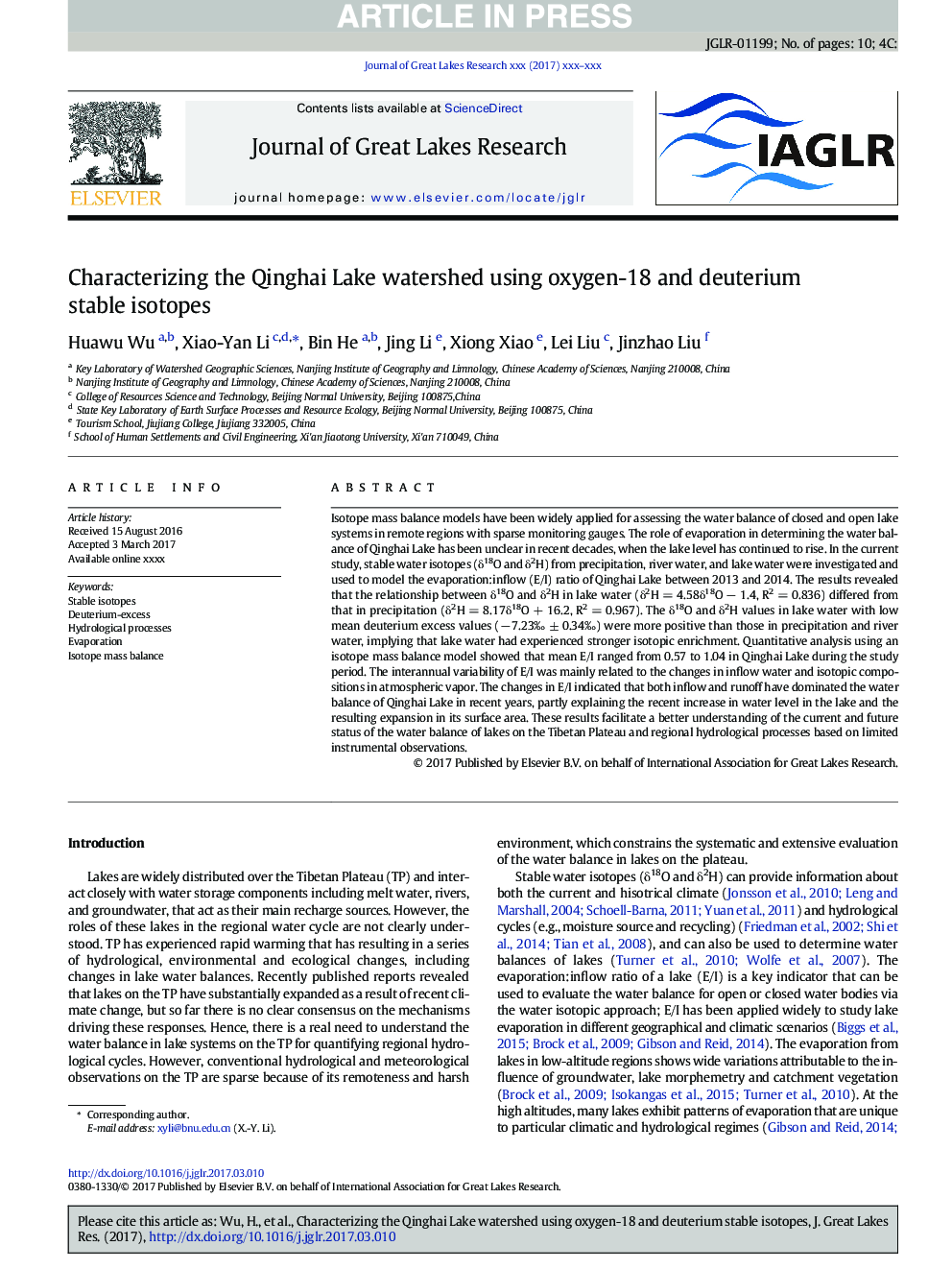| Article ID | Journal | Published Year | Pages | File Type |
|---|---|---|---|---|
| 5744615 | Journal of Great Lakes Research | 2017 | 10 Pages |
Abstract
Isotope mass balance models have been widely applied for assessing the water balance of closed and open lake systems in remote regions with sparse monitoring gauges. The role of evaporation in determining the water balance of Qinghai Lake has been unclear in recent decades, when the lake level has continued to rise. In the current study, stable water isotopes (δ18O and δ2H) from precipitation, river water, and lake water were investigated and used to model the evaporation:inflow (E/I) ratio of Qinghai Lake between 2013 and 2014. The results revealed that the relationship between δ18O and δ2H in lake water (δ2H = 4.58δ18O â 1.4, R2 = 0.836) differed from that in precipitation (δ2H = 8.17δ18O + 16.2, R2 = 0.967). The δ18O and δ2H values in lake water with low mean deuterium excess values (â 7.23â°Â ± 0.34â°) were more positive than those in precipitation and river water, implying that lake water had experienced stronger isotopic enrichment. Quantitative analysis using an isotope mass balance model showed that mean E/I ranged from 0.57 to 1.04 in Qinghai Lake during the study period. The interannual variability of E/I was mainly related to the changes in inflow water and isotopic compositions in atmospheric vapor. The changes in E/I indicated that both inflow and runoff have dominated the water balance of Qinghai Lake in recent years, partly explaining the recent increase in water level in the lake and the resulting expansion in its surface area. These results facilitate a better understanding of the current and future status of the water balance of lakes on the Tibetan Plateau and regional hydrological processes based on limited instrumental observations.
Related Topics
Physical Sciences and Engineering
Earth and Planetary Sciences
Earth and Planetary Sciences (General)
Authors
Huawu Wu, Xiao-Yan Li, Bin He, Jing Li, Xiong Xiao, Lei Liu, Jinzhao Liu,
